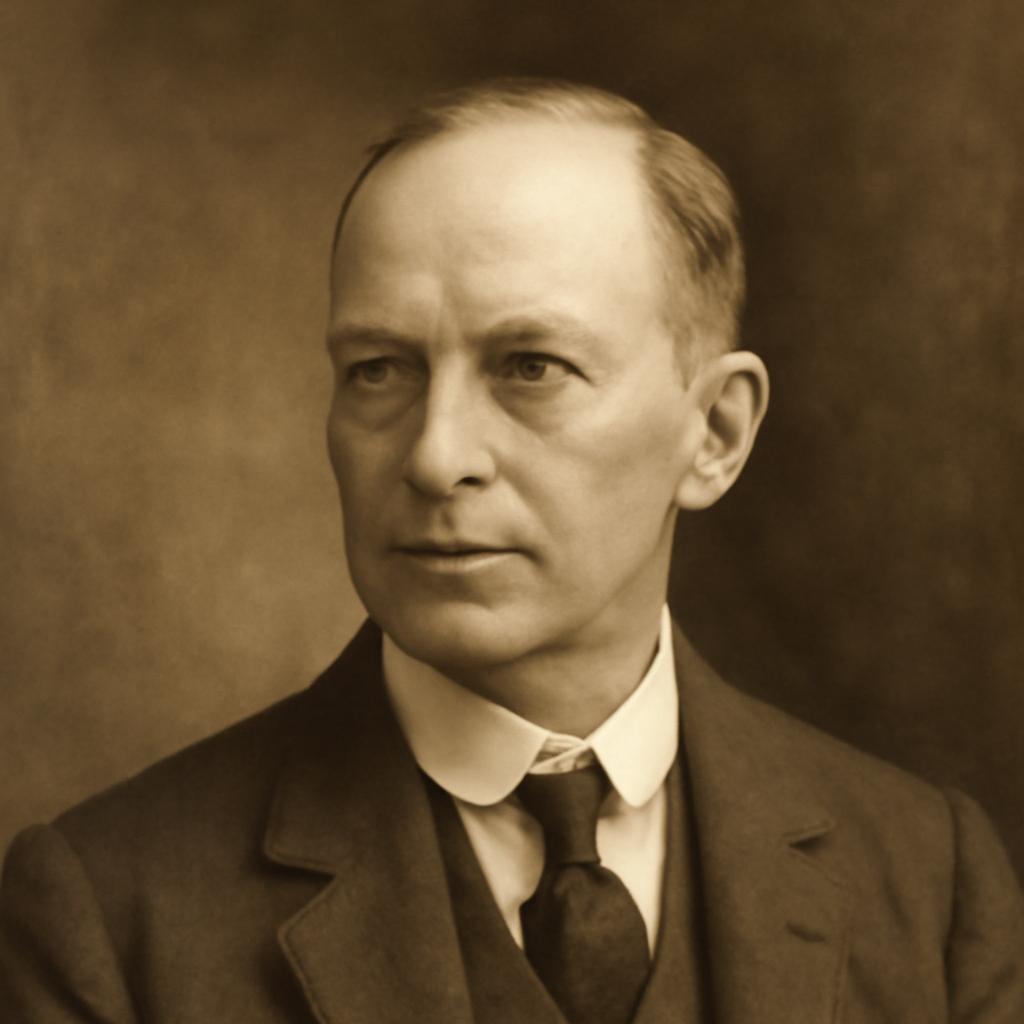The Reading Mother
Strickland Gillilan
1869 to 1954

I had a mother who read to me
Sagas of pirates who scoured the sea,
Cutlasses clenched in their yellow teeth,
“Blackbirds” stowed in the hold beneath
I had a Mother who read me lays
Of ancient and gallant and golden days;
Stories of Marmion and Ivanhoe,
Which every boy has a right to know.
I had a Mother who read me tales
Of Celert the hound of the hills of Wales,
True to his trust till his tragic death,
Faithfulness blent with his final breath.
I had a Mother who read me the things
That wholesome life to the boy heart brings-
Stories that stir with an upward touch,
Oh, that each mother of boys were such.
You may have tangible wealth untold;
Caskets of jewels and coffers of gold.
Richer than I you can never be —
I had a Mother who read to me.
Strickland Gillilan's The Reading Mother
Introduction
Strickland Gillilan's poem "The Reading Mother" stands as a poignant testament to the enduring impact of childhood literacy and maternal nurturing on the formation of an individual's character and worldview. This analysis will delve into the multifaceted layers of Gillilan's work, exploring its thematic richness, formal structure, and cultural significance within the broader context of early 20th-century American literature and the evolving perceptions of motherhood and education.
Historical Context and the Poet's Background
Strickland Gillilan (1869-1954) was an American journalist, humorist, and poet whose work often reflected the values and concerns of middle-class America during the late 19th and early 20th centuries. "The Reading Mother," published in 1915, emerges from a period of significant social and cultural transformation in the United States. The poem's emphasis on literacy and maternal influence aligns with the Progressive Era's focus on education reform and the changing role of women in society.
Thematic Analysis
The Power of Literature in Character Formation
At its core, "The Reading Mother" is an ode to the transformative power of literature in shaping young minds. The poem presents a catalog of literary experiences, from "Sagas of pirates" to "Stories of Marmion and Ivanhoe," illustrating the diverse array of narratives that contribute to a child's moral and intellectual development. This variety of genres—adventure, historical romance, folklore—suggests a holistic approach to education that combines entertainment with moral instruction.
The speaker's insistence that "every boy has a right to know" these stories underscores the democratizing potential of literature. In this view, access to a rich literary heritage is not a privilege but a fundamental right, essential for personal growth and cultural participation.
The Idealization of Motherhood
The poem presents a highly idealized vision of motherhood, centered on the act of reading aloud. This maternal figure is portrayed not merely as a caregiver but as a cultural transmitter, responsible for initiating her child into a world of imagination and ethical complexity. The repetition of "I had a Mother who read to me" emphasizes the speaker's gratitude and the centrality of this experience to their formation.
This idealization reflects broader cultural trends of the early 20th century, which often placed mothers at the center of children's moral and intellectual development. However, it's important to note that this perspective, while celebratory, also reinforces traditional gender roles and potentially narrow definitions of maternal success.
The Valorization of Intangible Wealth
The poem's concluding stanza presents a striking contrast between material and intangible forms of wealth. By asserting that the richness of literary exposure surpasses "tangible wealth untold," Gillilan challenges prevailing notions of value in an increasingly materialistic society. This privileging of cultural and emotional capital over financial assets reflects a romantic idealism characteristic of much early 20th-century poetry.
Formal Analysis
Structure and Rhythm
"The Reading Mother" consists of five quatrains with an AABB rhyme scheme, giving it a musical quality that echoes the oral tradition of storytelling celebrated within the poem. The regular meter (predominantly iambic tetrameter) creates a rhythmic consistency that mimics the comforting routine of bedtime stories.
This formal regularity contrasts with the varied and exotic content of the stories described, creating a tension between the familiar and the extraordinary that mirrors the child's experience of encountering new worlds through literature.
Imagery and Diction
Gillilan employs vivid, often violent imagery to describe the content of the stories: "Cutlasses clenched in their yellow teeth," "Blackbirds' stowed in the hold beneath." This striking diction serves multiple purposes:
- It captures the excitement and danger that often captivate young readers.
- It highlights the contrast between the safety of the domestic reading environment and the perilous worlds explored through literature.
- It suggests the potential of literature to expose children to complex moral situations in a controlled, mediated context.
The poem's language becomes notably more subdued when describing the mother figure, emphasizing gentleness and constancy. This shift in tone underscores the mother's role as a stable anchor in the child's imaginative journeys.
Cultural and Literary Significance
"The Reading Mother" occupies a unique position at the intersection of several literary and cultural trends of its time:
- Changing Perceptions of Childhood: The poem reflects evolving ideas about childhood as a distinct and crucial developmental stage, worthy of specific cultural products and practices.
- The Rise of Children's Literature: By cataloging various types of stories, the poem indirectly documents the burgeoning field of children's literature in the late 19th and early 20th centuries.
- Literacy as Social Capital: The emphasis on literary knowledge as a form of wealth aligns with Progressive Era ideals of education as a means of social mobility and civic participation.
- Domestic Sentimentalism: While less overtly emotional than earlier examples of the genre, the poem participates in a tradition of domestic sentimentalism that idealizes the home as a site of moral and intellectual nurturing.
Critical Reception and Lasting Impact
While "The Reading Mother" has not achieved the canonical status of some contemporaneous works, it has maintained a persistent presence in discussions of childhood literacy and parental influence. Its enduring popularity, particularly among educators and librarians, speaks to its resonance with ongoing concerns about the role of literature in child development.
Critics have both praised the poem for its celebration of literacy and questioned its potentially limiting view of motherhood. Feminist readings, in particular, have noted the implicit pressure placed on mothers to serve as primary educators, potentially at the expense of their own intellectual pursuits or professional ambitions.
Conclusion
Strickland Gillilan's "The Reading Mother" emerges as a complex artifact of early 20th-century American culture, simultaneously celebrating the power of literature, idealizing maternal influence, and challenging materialistic values. Through its careful balance of form and content, the poem creates a nostalgic yet forward-looking vision of childhood education rooted in the intimate bond between parent and child.
As we continue to grapple with questions of literacy, education, and parental responsibility in the digital age, Gillilan's poem offers a poignant reminder of the enduring power of shared stories to shape individual lives and collective cultural memory. While its gender dynamics and idealized vision of motherhood may be subject to contemporary critique, "The Reading Mother" remains a touching tribute to the transformative potential of early exposure to literature.
In an era of rapid technological change and shifting educational paradigms, the core message of Gillilan's poem—that the gift of literacy and the love of literature are among the most precious legacies we can bestow upon future generations—retains its relevance and emotional resonance. As such, "The Reading Mother" stands not merely as a historical curiosity but as a still-vital meditation on the sources of true wealth and the foundations of a life well-lived.
This text was generated by AI and is for reference only. Learn more
Want to join the discussion? Reopen or create a unique username to comment. No personal details required!



Comments
No comments yet. Be the first to comment!